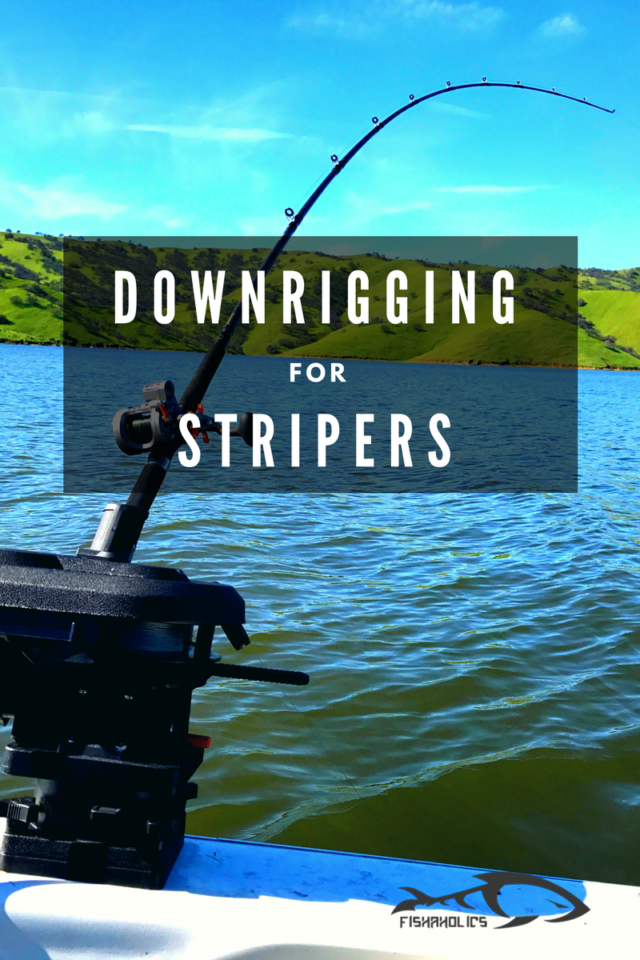
Downrigging For Stripers
Imagine access to a part of the lake with little to no fishing pressure. A honey hole that you alone have the keys to.
I believe downriggers can unlock you to these new fishing grounds that have seldom been touched. Learn to use downriggers and how to target stripers in the deep. It’s a definite game changer.
In this post, I’ll be showing you how to get started using downriggers to catch striped bass.
What Is A Downrigger
Imagine a rod and reel bolted to the side of the boat. At the end of the line is a heavy weight that you can reel up and down. That my friend is a simplified version of what a downrigger is.
The purpose of a downrigger is to allow you to troll an umbrella rig or lure at a specific depth. You attach your main line to the downrigger ball and when a striper takes the bait, it detaches from the downrigger leaving you free to fight the fish without a heavy weight on the other end.
Downrigger Parts
A downrigger consists of a fixed or detachable base bolted on the edge of the boat. Mounted on the base is the main body containing the spool and other components.
Attached to the downrigger is a boom with a pulley at the end and weight which attaches to the cable. The image below shows a setup that’s rigged for trolling.
Manual Downriggers
Manual downriggers like the Scotty Laketroller are operated manually by cranking a lever to raise and lower the downrigger ball. They get the job done.
You can get down to depth and catch fish none the less. But there are drawbacks to using a manual downrigger.
With a manual downrigger, you have to crank by hand a heavy weight every time you catch a fish or leave an area.
Trolling over places with sharp changes in elevation can make it difficult to fish. You can easily snag the downrigger ball or your rig on the bottom.
Electric Downriggers
Electric downriggers like the Scotty Depthpower allow you to bring your downrigger ball back up using an electric motor. With a press of the button or turn of a knob, the downrigger automatically brings up the ball and stops when it reaches the surface.
A big disadvantage to an electric downrigger is the price. It can be five or more times as expensive than a manual one.
I can tell you now, an electric downrigger is worth the investment. Here’s why.
Not manually reeling up the downrigger ball is a big plus. Most fishermen downrigging become discouraged or fail to use the downrigger to it’s maximum potential.
They’ll skip locations that have sharp elevation changes or fail to adjust the depth to trigger a bite.
When you’re constantly adjusting depths fishing locations such as humps or points, you want the ability to electronically bring your ball up or down so you can focus on boat control, reading the depth and fishing.
Electric downriggers make solo trips a lot easier. Rapid elevation change is a nightmare when fishing more than one downrigger.
These are just some advantages to using electric downriggers. Now that you have an idea of what a downrigger is and types of downriggers available, here’s a problem that affects everyone trolling. Blowback.
Blowback, What’s That?
Let’s say for example, we’re at a complete stop and we drop the downrigger ball to 50’, the actual depth of the ball is 50’.
Once the boat starts moving the water resistance on your line and downrigger ball will change the depth. Instead of being at 50’, the downrigger ball will now be at 45’ for example.
This affect on your depth trollers call blowback.
So How Do You Reduce Blowback?
The easiest way to reduce blowback is to troll at slower speeds. Less resistance pushing against your downrigger line means truer depths.
What if you want to go faster?.
You can use a heavier weight. A 10lb downrigger ball will stay truer than a 6lb ball. Keep in mind the deeper you go, the more blowback affects depth.
Another way to reduce blowback is to use a different shaped downrigger ball. A pancake downrigger ball for example will stay truer at higher speeds and depths than a round ball of the same weight.
You can also change your line type to reduce blowback. Braided downrigging cable will have less blowback than stainless steel cable plus you don’t get that howling noise that stainless steel line emits while trolling.
Seasonal changes can affect blowback. Water is denser in the winter months than summer. Less resistance means less blowback.
Current affects your depth as well. Places like the California Delta where tidal currents play a big role, you will see the most affect. Going with current will help you stay truer and going against it will affect your depth more.
Why Use a Downrigger For Striper Fishing
Most fishermen usually target stripers shallow. When the shallow bite shuts off, most boaters head home. With downriggers, you can target striped bass at all depths anytime of the day.
They can live pretty deep. I’ve marked them in 250 feet of water or more.
What many fishermen don’t realize is that deep water is ignored by the majority of anglers. People talk about “honey holes” all the time. Highly productive places that catch fish consistently because there’s little to no angling pressure.
Fish this deep are not accustomed to being caught. If you really think about it, these deep water locations are honey holes.
I’ve gathered crucial downrigging depths to help you get started. Below you’ll find the depth chart for a 12lb downrigger ball using steel cable.
Where And How To Catch Striped Bass
Now that you know why deep water can be productive places, here are a few locations to get you started.
Some Reservoirs or lakes get drawn down seasonally. Sometimes Google imagery will capture a lake at it’s lowest level. Using the historical imagery feature in Google Earth, you can go back in time to when they drew the lake very low. You can use this data to scout out some of the locations I’ll be mentioning below.
To learn more about how Google Earth works for finding fishing locations in this post HERE.
Muddy Flats
Muddy Flats are areas with a muddy bottom with little to no elevation change. I love fishing these locations because many anglers bypass them. Stripers are bottom feeders too.
I fish the California Aqueduct often and I see them foraging like carp along the canal walls sucking up small crustaceans.
San Luis Reservoir, a deep water impoundment, have bottom dwelling bait such as grass shrimp and sculpin. When stripers forage on the bottom. They’re hunting for these little critters.
I usually scan a stretch of muddy flat bottom for signs of activity. Most of the time it’s very difficult to spot stripers on the bottom.
Stripers are easier to spot when they are active. You’ll see vertical arcs going up and down all over the place. These are active fish and make for easy targets like in the pic below.
They’re so thick and active, it looks almost like a bunch of weeds down there. The line you see at about 70′ of water is the downrigger ball. Those marks near the bottom are very active stripers. Your odds of hooking up increase dramatically when you spot activity like this.
Above is a snapshot of stripers on the bottom that are less apparent. You can make out a few vertical arcs but the majority of the fish are hugging the bottom. The average fishermen scanning for striped bass will easily bypass these areas.
These striped bass are feeding so close to the bottom, most will misinterpret them as rocks or cover. Remember these areas are muddy flats. If you know the lake bed is muddy with little to no cover, most likely what you’re seeing are stripers.
It wouldn’t hurt to give the location a try.
How To Fish This Area
To fish muddy flats, I use umbrella rigs like the Atlas Umbrella Rig which can collapse for easy storage. Since most of these fish are literally hugging the bottom, knowing the depth of your rig when paired with your downrigger is crucial.
You have to stay accurate and precise when fishing these locations.
You can find the depth chart for the Atlas Rig HERE.
Using the depth charts you can stay inches off the bottom. You don’t have to worry about being too high or too low and dragging mud. That’s why depth is so important.
Too many fishermen guesstimate their depth and fail to hit the right depth.
Sometimes a change in elevation, change in speed or turn can drop the umbrella rig too low. One advantage to using an umbrella rig is the arms on the rig act like a weed guards and can help keep the umbrella rig upright and free of debris.
Sometimes having the umbrella rig drag on the bottom will attract striped bass from afar because it’ll kick up mud and create a cloud which can draw in curious stripers.
Deep muddy flats are some of the easiest and productive places I fish.
Points
Unlike deep muddy flats, points are some of the hardest locations to fish but can be the only productive places sometimes.
The quick elevation changes will deter many trollers from fishing the area. Plus many fishermen fail to properly fish the locations because they do not follow the contour of the terrain.
They’ll miss fish that may be at the base or midway along a point. Most people trolling will stay at a single depth and troll the entire stretch without changing the depth of the rig at all. They’ll miss alot of fish that relate at various depths along the structure.
In the image above, you can see there are fish all along the point. You can spot some midway and some very active stripers near the tip of the point.
Here’s where you want electric downriggers. You will constantly be raising and lowering the downrigger ball.
Imagine using a manual downrigger to crank up your heavy ball. All the while reeling in slack from your main line and steering your boat to keep a straight path.
It won’t take long before you move away to an easier locations and skip fishing points completely.
Points are productive because stripers use them to stage before moving shallower or deeper in the water column. They also use it as an ambush point. Some days it’ll be the only areas producing so it’s important to learn how to fish these locations.
Here’s How You Fish This Location
Throw on your favorite lure or rig. Knowing the depth of your lure or rig when paired with your downrigger is a must fishing points. I use the Atlas Rig because I know it’s exact depth with the provided depth charts.
Sometimes I won’t mark fish at these locations but they’ll still bite. When you are not marking anything, the key is to stay as close as you can to the bottom without snagging. I like to stay 5’ above the bottom to leave enough cushion.
With an electric downrigger, you can easily control the depth and still maintain proper boat control.
Not all points are created equal. Sometimes they’ll only relate to main lake points. These are locations where there are no other points in close proximity. Once I fished a mile long stretch of shoreline and only 4 locations were consistently producing. They were all main lake points.
Deep Water Channels
Channels are great places to catch stripers. A channel serves as a highway for striped bass to travel up and down the lake or reservoir.
I’ve spotted them staging along the edges or right in the middle of a channel. Most deep water channels are surrounded by relatively flat bottom so it makes it easier to troll these areas.
Here’s How I Fish These Locations
To best cover these areas, you should troll in a zig zag pattern to maximize the amount of time you go over the channel.
If they are suspended, I like to troll right though them on the first pass rather than above or below them. This can entice both a reaction and hunger strike. If you don’t get any hits, try another pass and troll just above them.
I use an umbrella rig like the Atlas Rig because the bait fish presentation from the umbrella rig will get their attention. Sometimes when I troll through these schools, I’ll catch more than one fish.
Once in a while, I’ll notice a few teaser swimbaits missing from my umbrella rig. This is a sign that the school of stripers are actively feeding.
Here’s a video I did a while back on deep water channels fishing for striped bass at San Luis Reservoir. Stripers along deep water channels can be very predictable as you can see in the video.
You can literally count down to when they’ll bite right as your umbrella rig passes by them.
Submerged Brush
I like targeting submerged brush when the water level begins to rise. Areas with a lot of underwater brush will turn into cover for bait fish.
Stripers will hunt in and around these areas. I’ve seen them dart in and out of thick brush on the fish finder. The best locations are the ones that have isolated patches.
A little knowledge of the body of water is helpful but blindly scanning for them along the shoreline will help too.
Here’s how I fish these locations
I can’t stress how important depth is especially fishing around brush. Troll too low and you will be snagging all day. You can troll with lures but treble hooks make it very easy to snag on brush. I use umbrella rigs here.
Since I know my exact depth using the Atlas Rigs, I can hover right above the brush. Depending on how the stripers are relating that day, you’ll have to fish higher or closer to the cover.
If they’re hovering above the brush, troll slightly above them. This should trigger a bite. If they’re not biting, try switching colors or the size of the presentation. Smaller profile baits might be better since the bait fish that hide in these areas tend to be smaller.
If you scan the area and find that the striped bass are in the brush or darting in and out, you have to put your rig just above the brush. Here’s where you can get into some trouble with snagging.
This is also where the Atlas Rig will come in handy. The arms of the umbrella rigs act like weed guards and will reduce the snagging. Use the depth charts to place your umbrella rig just above the brush to get them to bite.
Sometimes I will purposely drag my umbrella rig purposely on the brush and then raising it up again. Believe it or not, this little tactic works wonders sometimes. I freak out every time I do it but it’s produced for me in the past.
Doing this makes your umbrella rig look like bait fish darting out of the brush. That’s what entices these stripers to bite.
I know most of you won’t consider dragging your umbrella rigs into cover but when you see these stripers darting in and out an you’re not getting any bites, you’ll reconsider.
Now that you have a fundamental understanding of how to use a downrigger and where to target stripers, get out there and put this stuff to use. Nothing beats time on the water but this post should help you get started.
Remember to keep up to date with my fishing reports. Every trip I’m forced to try something different just to get them to bite. It’s never easy but you may catch something in the reports that will help you on your next trip.
Now you know. Go get em!
You can find the same gear I use using the affiliate links below.
–Okuma Cold Water line counter reel
–Daiwa Wilderness Trolling Rod
–TackleBuilders Atlas Umbrella Rig

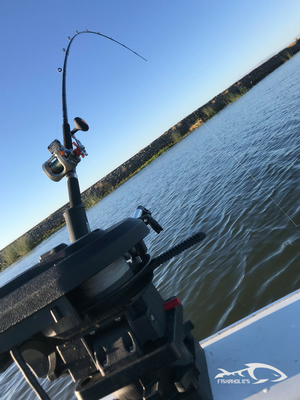
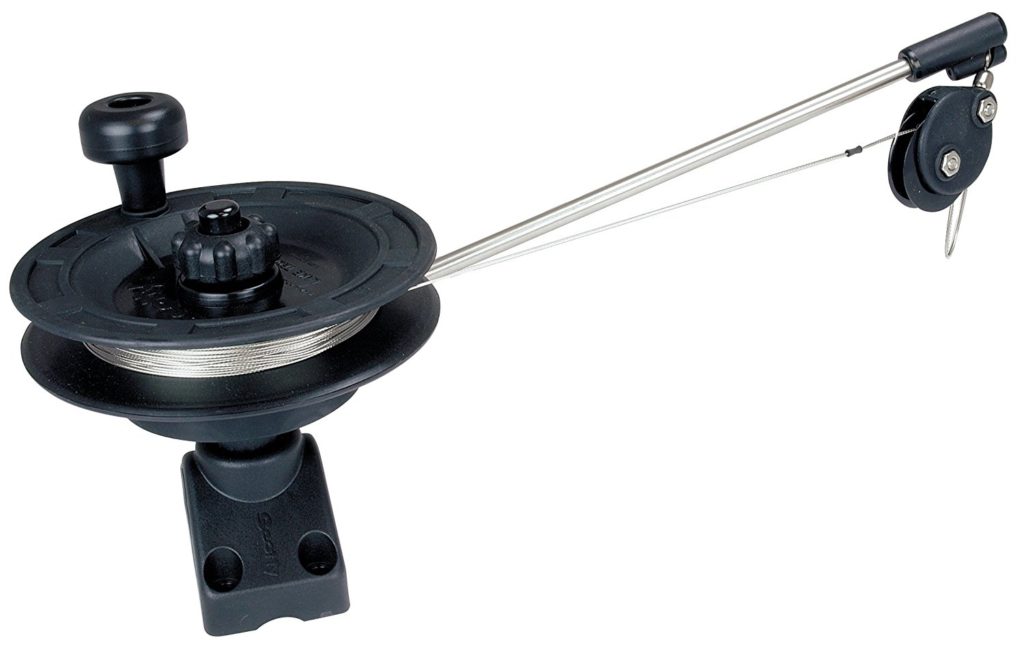
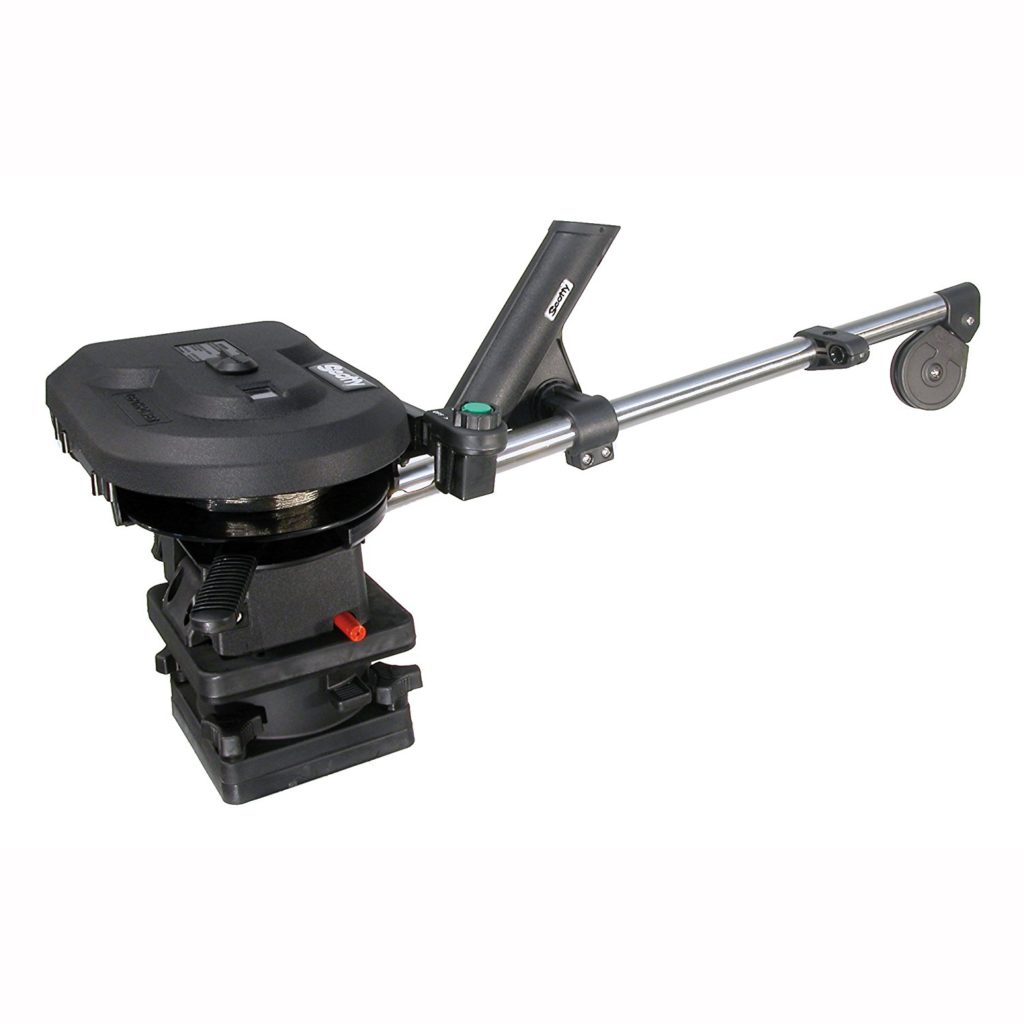
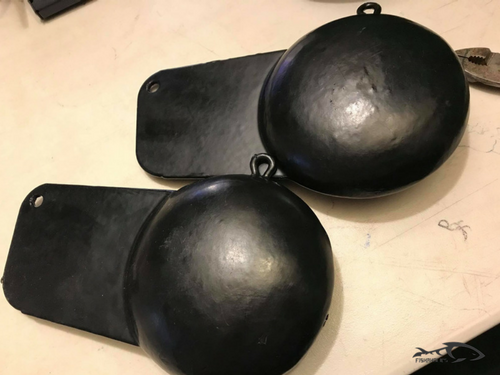
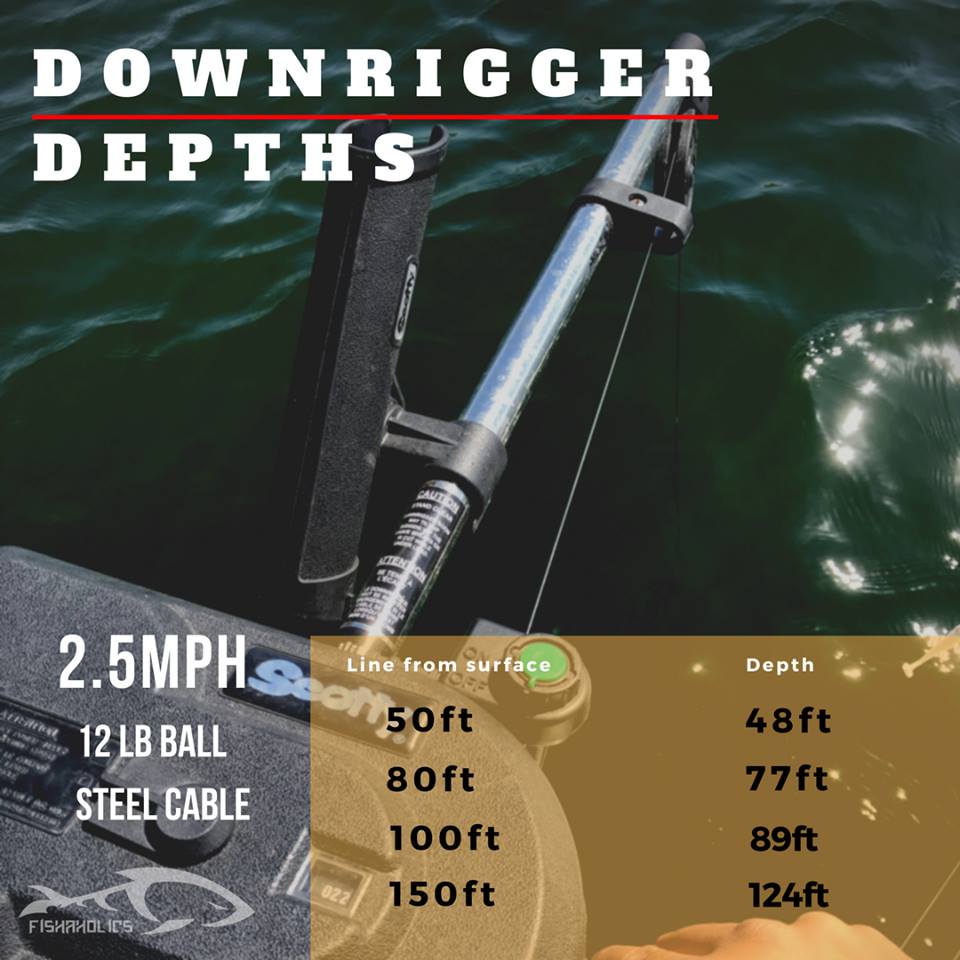
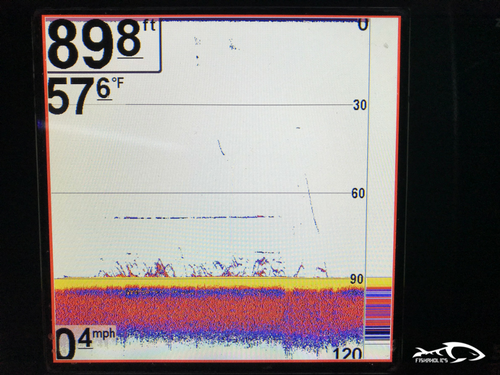
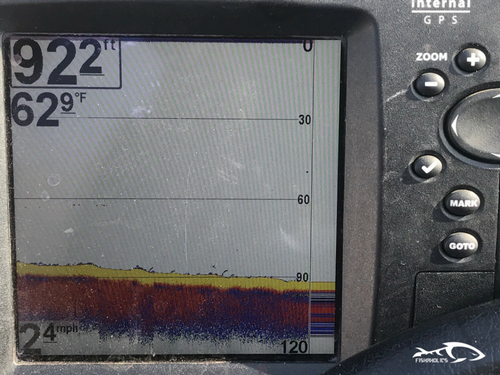
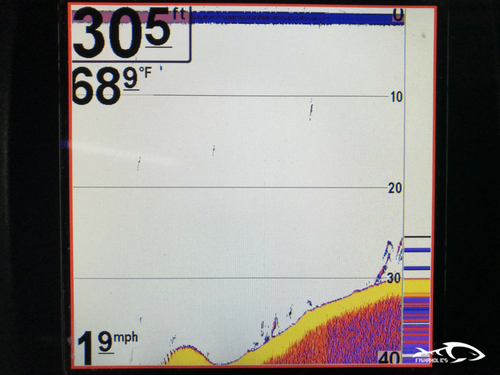
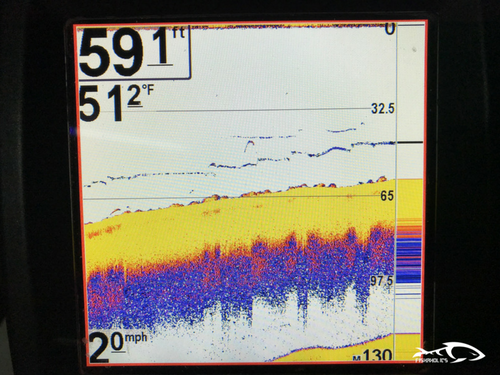
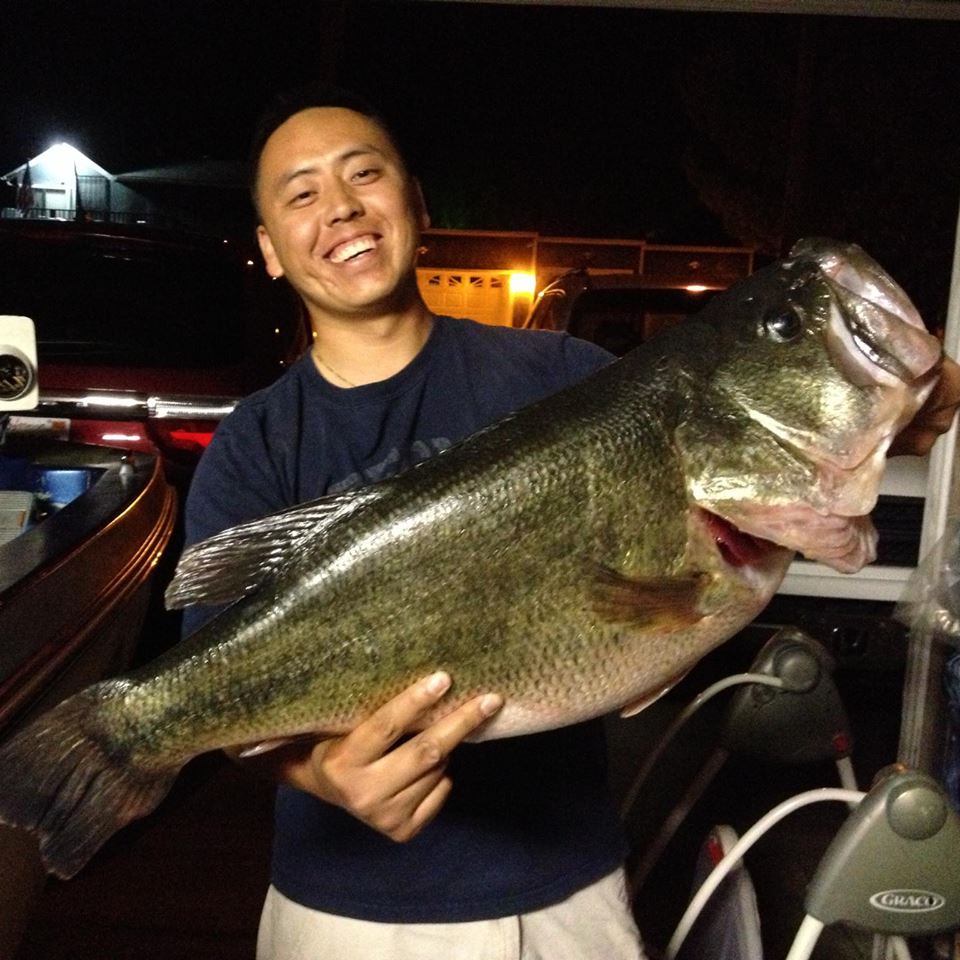
Absolutely very informative!!! Took lost of notes . I was just going to ask someone on the group to explain this, Thank u again for taking time out of your busy day to post this info, please know we really appreciate you and all you do for this group! Keep up the good job!
No problem. Just sharing the love. When you’re ready, now you know what to do. Good luck out there.